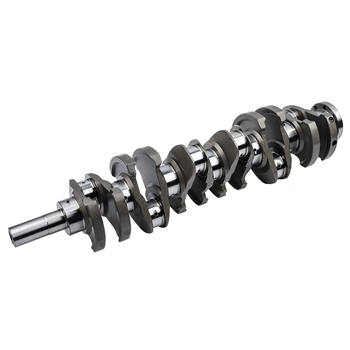Understanding the Role of the Crankshaft in Toyota Hilux Engines
To be honest, the crankshaft is the heart of any engine, and the Toyota Hilux is no exception. The crankshaft is responsible for converting the linear motion of the pistons into rotational motion, which drives the wheels and propels the vehicle forward. In my experience, a well-maintained crankshaft can significantly improve the performance and longevity of your Toyota Hilux.
How Does the Crankshaft Work in Diesel Engines?
In diesel engines, the crankshaft works in conjunction with the connecting rods and pistons to generate power. As the diesel fuel ignites, it creates pressure that pushes the pistons down, which in turn rotate the crankshaft. The crankshaft then transmits this rotational energy to the transmission and ultimately to the wheels.
How Does the Crankshaft Work in Petrol Engines?
Petrol engines operate similarly to diesel engines, but with some key differences. In a petrol engine, the spark plugs ignite the fuel-air mixture, causing the pistons to move and rotate the crankshaft. The crankshaft then transmits this energy to the transmission and drivetrain.
Common Problems with Toyota Hilux Crankshafts
Despite their crucial role, crankshafts are not immune to wear and tear. Frankly speaking, some common problems with Toyota Hilux crankshafts include:
Symptoms of a Faulty Crankshaft
If you suspect that your Toyota Hilux crankshaft is faulty, here are some symptoms to look out for:
- Knocking or rattling noises from the engine
- Reduced engine performance or power loss
- Vibrations or shaking when idling or driving
- Difficulty starting the engine
Maintaining Your Toyota Hilux Crankshaft
Regular maintenance is absolutely necessary to keep your Toyota Hilux crankshaft in top condition. Here are some tips to help you maintain your crankshaft:
- Regular oil changes to ensure proper lubrication
- Inspect the crankshaft bearings for wear or damage
- Check the alignment and balance of the crankshaft
- Replace any damaged or worn components promptly
When to Replace Your Toyota Hilux Crankshaft
If your Toyota Hilux crankshaft is beyond repair, it may be time to replace it. However, replacing a crankshaft can be an expensive repair, so it's important to weigh your options carefully. Interestingly enough, in some cases, it may be more cost-effective to replace the entire engine rather than just the crankshaft.
Conclusion
In conclusion, the Toyota Hilux crankshaft plays a critical role in the performance and longevity of your vehicle. By understanding how it works, identifying common problems, and maintaining it properly, you can help ensure that your Toyota Hilux runs smoothly for years to come. If you suspect that your crankshaft is faulty, don't hesitate to seek professional help to diagnose and repair the issue.




